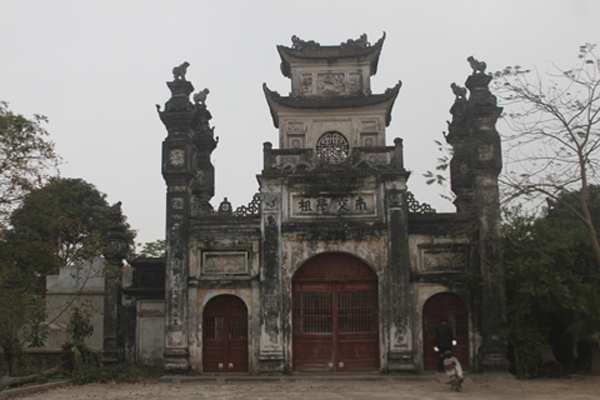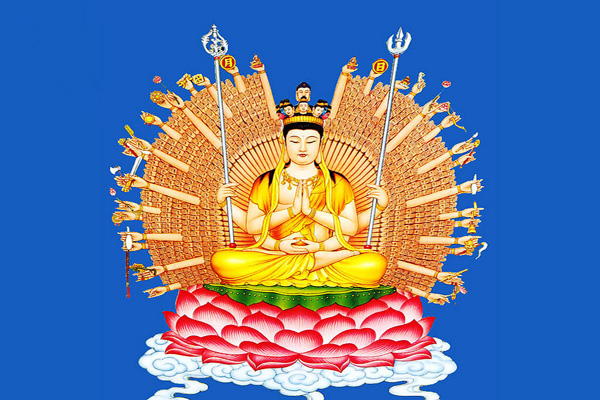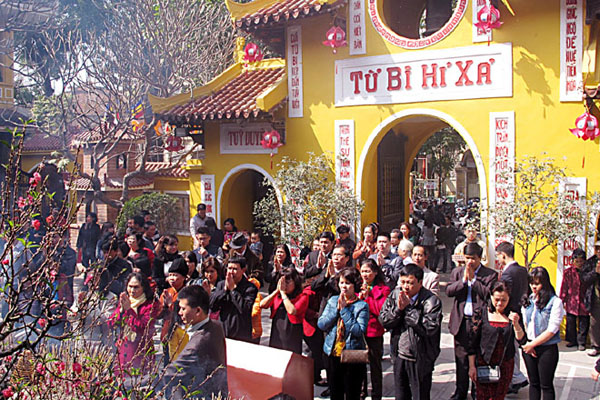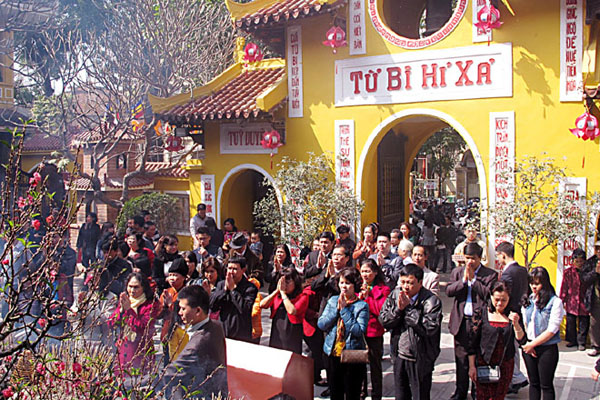Buddhism was introduced into Vietnam in the early years of our era by Indian merchants and Buddhist monks, who came to Vietnam by sea. Luy Lau (currently the Dau area of Thuan Thanh district, Bac Ninh province, 17km east of Hanoi ) , was the former capital of ancient Vietnam and soon became the centre of Buddhism at the end of the 2nd century.
Buddhism was introduced into Vietnam in the early years of our era by Indian merchants and Buddhist monks, who came to Vietnam by sea. Luy Lau (currently the Dau area of Thuan Thanh district, Bac Ninh province, 17km east of Hanoi ) , was the former capital of ancient Vietnam and soon became the centre of
Buddhism at the end of the 2nd century. At that time in Luy Lau, there were 20 pagodas, 500 Buddhist monks and 15 Buddhist stupas. Later from here Indian Buddhist monks also traveled to China to disseminate Buddhism.
Since Buddhism was first introduced into Vietnam from India, the word But - a phonetic transcription of the word Buddha from Sanskrit - came into being in the Vietnamese language, which we find in many Vietnamese folk tales, for example Tam Cam, a kind of Vietnamese Cinderella. Later came the word Phat, which is the Chinese phonetic transcription of the word Buddha.

The Indian monks brought into Vietnam the Hynayana sect (Small Vehicle), which emphasizes self-enlightenment. Later Chinese bonzes came to enter this country to disseminate the Mahayana sect (Great
Vehicle), which emphasizes enlightenment for all beings. Gradually, this sect became more popular.
When introduced into Vietnam, Buddhism coexisted with polytheism. Some of the Buddhist dogmas accord with the concepts of Vietnamese ethics ("If you behave kindly towards everyone, you will be treated kindly; Heaven punishes the evil and helps the honest," etc.).
The Vietnamese people consider Phat or the Buddha as Heaven closely supervising the lives of human beings on earth. Yet, unlike Heaven, the Buddha tries to convert wrongdoers by means of mercy.
Buddhism also exists in harmony with two other religions: Confucianism and Taoism, both imported from China.
There are three Buddhist sects in Vietnam, namely Thien Tong (Dhyana), Mat Tong (Tantrism) and Tinh Do Tong (pure Land). They show no clear separation among themselves. They can be combined in the
worship of the Buddha.

Vietnamese pagodas house many Buddhist statues such as Bo Tat (Bodhisattva), La Ran (Arhat), A Di Da (Amitabha) and Quan Am (Guan Yin or Avalokitesvara). Each type of statues has many categories. For example, for Sakyamouni, we have Thich Ca thuyet phap (Preaching Sakyamouni), Thich Ca so sinh (Newly-born Sakyamouni), Thich Ca Tuyet San. (Sakyamouni in the Hymalayas). The Bodhisattva may include Ph¢t Biz Quan Am (Avalokitesvara) and Quan Am tong tu (Avalokitesvara holding a child), etc.
Under the feudal dynasties of Dinh, Le, Ly and Tran (lath_14th centuries), Vietnamese Buddhism played an important role in the spiritual life of the State. Many Buddhist bonzes were named "The Nation's Masters" and acted as political advisors to the kings. Buddhism was considered State religion. Many kings such as Ly Thanh Tong, Ly Anh Tong, Ly Cao Tong and Tran Thai Tong, and many high-ranking mandarins under the Dinh, Le, Ly, Tran and Posterior Le dynasties adopted and became venerable bonzes or hermits. In the 13th century under the Tran's reign, the Truc Lam Zen sect - a purely Vietnamese Buddhism - came into being and had close relation with the then politics, customs and morals.
In the 13th century, Vietnam underwent several civil wars. Pagodas were left in ruins, and the practice of Buddhism also suffered.
Having succeeded in defeating the Nguyen and the Trinh Lords, the Tay Son (1778-1802) restored Buddhism, built large and beautiful pagodas, and selected learned and virtuous monks for taking care of the pagodas and teaching Buddhist doctrine to the masses.
In the 19th century, the Nguyen Kings also ordered the overhaul and restoration of pagodas. By the end of the 19th century, Vietnam became a French colony divided into three parts but Buddhism still was practiced. There were some Buddhist organizations with their own newspapers diffusing Buddhist dogmas.
Buddhism has penetrated into the life of Vietnamese. Apart from bonzes, there are people who lead a religious life in their own houses; they go to pagodas on festive occasions, on the first day and the full-moon day of each lunar month, and they have a Buddhist altar in their homes, According to statistics from the Government Committee on Religious Affairs, about 3 million Vietnamese are Buddhist monazites, about 10 million go to pagodas regularly, and several dozen millions are influenced by Buddhism.

Buddhism in Vietnam is regarded as a folk religion because it has adapted itself to the Vietnamese indigenous beliefs and absorbed from them various elements. Therefore, gods of Vietnamese origin are also found in Buddhist pagodas. Every pagoda has statues of Mr. Benevolence (Ong Thien), Mr. Sternness (Ong Ac), and the God of Land (tho dia). Vietnamese folk beliefs were incorporated into
Buddhist doctrine.
In a number of pagodas in Hanoi and other localities, there is a Buddha called Phat Duoc St: (Physician Buddha), who is believed to have special ability to cure diseases. The Physician's lamp is nearly 1m high, with an octagonal trunk and seven layers, each layer having seven branches, each branch having one light (totaling 49 lights).
Pagodas in Hanoi are also dedicated to the cult of tutelary deities or national heroes. Many pagodas follows the architectural design: "the Buddha in the front and the Holy Mother at the rear".
Apart from the regular Buddhist festivals celebrated every year, there are ceremonies held at pagodas such as "Forgiving Wandering Souls" (xa toi vong nhan) or "Fulfilling Filial Piety." On such occasions, Buddhist followers usually make votive offerings, including incense, flowers, oil lamps, candles, tea, and fruit.



